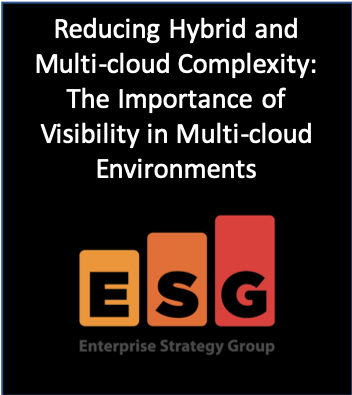How can you manage multi-cloud complexity in today’s distributed environments? A common approach–using disparate cloud vendor tools–is often complex. Each vendor tool was designed for a specific public cloud. If you use multiple clouds (and 84% do according to the 2019 RightScale State of the Cloud Report), you’ll have multiple tools to manage. Pulling together information across all of them is time consuming and highly manual, which means it will take longer to isolate problems. Worst of all, you’ll have less time to focus on the really important stuff like supporting your mobile workforce.
With so much to manage, how can you get ahead in a hybrid and multi-cloud world? Here are five ways that you as an IT professional can reduce hybrid and multi-cloud complexity:
5 ways to manage multi-cloud complexity
- Provide full transparency across private clouds, multiple public clouds, and the networks that support them. 91% of enterprises have adopted public cloud and 72% private cloud, according to RightScale, so it’s critical to provide visibility across both as well as the networks that underpin them. And, with today’s work-from-home focus, the investment in cloud computing and cloud performance is only increasing.
- Deliver visibility into legacy and emerging apps. This requirement will be more important for more established organizations as they transition to the modern apps but still have a large percentage of legacy application environments (physical and virtual).
- Automate the discovery of application environments. Automation is a highly effective way to manage the complexity of distributed environments. One way to leverage automation is to auto-discover application environments to show where applications, services and workloads are located and how they are connected. This capability is critical to isolate issues quickly and resolve intermittent problems and brown outs and ensure your digital workforce can get the job done.
- Expand your data set. You should have the ability to collect data from each cloud service and integrate it with your existing visibility solution to provide holistic insights. For example, you should be able to use AWS metrics with your APM and NPM tools to connect the dots between apps, workloads, networks, and locations.
- Get granular. Since modern application services spin up and down in seconds, your data needs to be highly granular, ideally with 1-second monitoring intervals. It’s also a best practice to combine detailed data from network packets with flow data and device telemetry to provide a complete picture.
Learn more about reducing multi-cloud cloud complexity
To learn more about how to reduce hybrid and multi-cloud complexity and how you can ensure performance for your digital workforce everywhere and anywhere, see the ESG Report: Reducing Hybrid and Multi-cloud Complexity: The Importance of Visibility in Multi-cloud Environments.

